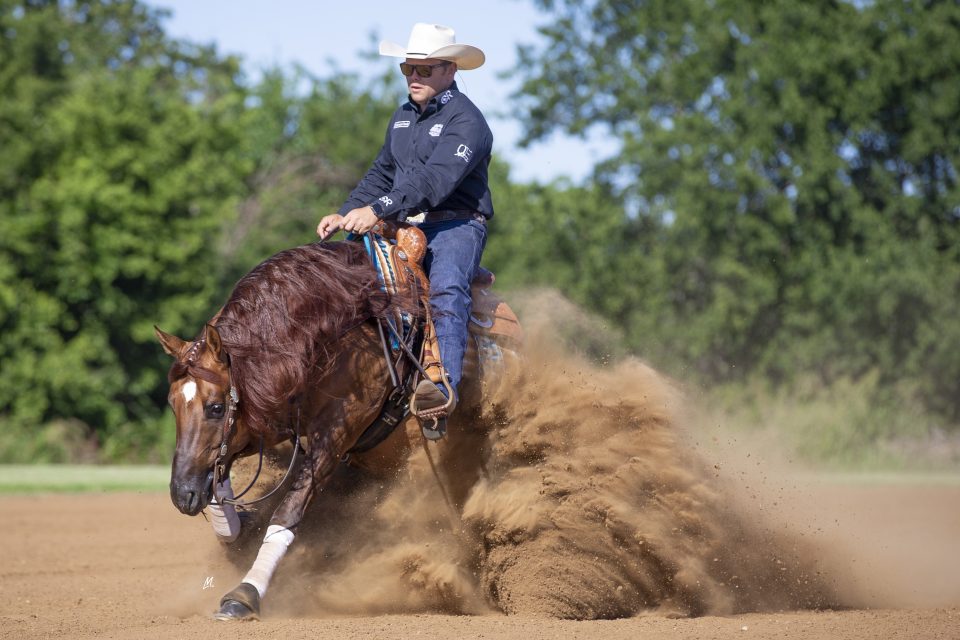How can collaboration, shared experiences, and learning from each other’s experiences enhance your business? One ‘group study’ expert (who’s also a reiner) shares her insights here. By Jennifer Paulson

You work in an inherently competitive industry. Show-pen success and NRHA Lifetime Earnings aside, you vie for horseflesh, customers, sponsors, and more to keep your business moving in a positive direction and your revenue numbers growing. So it might seem as if collaborating with fellow NRHA Professionals on matters of busines would be counterproductive to your goals.
Dr. Marsha Heinke, EA, CPA, CVPM disagrees and has experience to support collaborative efforts. The Grafton, Ohio, reiner owns and operates Veterinary Practice Made Perfect, a firm that provides business consulting, accounting, and tax advice to veterinary practices. Additionally, she’s involved with Veterinary Management Groups, which is where small groups of veterinarians come together to learn from each other—through both triumphs and failures—to improve their business practices in everything from accounting and personnel management to regulations and taxes.
Called “study groups” or “groups of 20,” these collaboratives haven’t yet been developed in the horse industry that we know of. However, Heinke’s insights and key learnings from working with veterinarians can open your mind and your eyes to the opportunities that lie within collaborative group work.
Learn about these topics from Heinke:
Part 1: A Little History and Keys to Success
Part 3: How a Group Could Help You
How a Group Could Help You
This all might make sense in a veterinary-practice context, but you might be wondering how a study group could help you. The truth is, in very similar ways as it elevates your veterinarian’s practice.
Your focus is on breeding, training, and showing horses; coaching youth and non pro riders; and everything else horse-related.
“As a business owner, it’s expected that you have expertise or hire someone with expertise that helps you stay in line with laws and regulations to keep you out of trouble,” Heinke warns. “You don’t want to go outside those laws and incur fines and penalties that lead you into bankruptcy. That’s a real risk. We talk about all of these things in our study groups.”
These topics include inventory, buying and selling, security, banking, revenue collection, internal control structures, marketing, promotion, and human resources.
“The largest risk often is the human resources part of it,” Heinke says. “A couple people make claims against you, and you’re in litigation that can leave you bankrupt, whether the accuser is telling the truth or not. You can hope that you’re awakened by things that happen to those around you, but you have to be attentive to everything. Anyone can sue you for just about anything, and you have to pay to defend yourself. It’s better to have your house in order and do everything you can to minimize risk from the start. You might be a great horse trainer, but these other components are what make or break your business.”
Heinke shares the entrepreneurial mindset and sees that NRHA Professionals want to make a mark on the world and do things their own way. Entrepreneurs share that desire to show that you can do it on your own—and better than anyone else. When you start with a great business model that alleviates risk and follows the letter of the law, it allows you to do what you do best and do right by your horses.
“Sharing the best way to run your business is one of the ways you can be the best you can at serving the horse,” Heinke says. “When you’re not managing things well, you have to cut corners. Or you’re not able to show your financials to get a loan when you need one. In cases like those, what suffers? The horse. When your business is in order, you don’t have to take on clients who don’t share your values. You don’t have to accept horses that don’t fit your program. You owe it to yourself and your horse to do the best you can in your business. It takes money to do things the right way. Strong business knowledge allows you to build the capital to do things the right way.”
Read the rest of this article at the links above.



